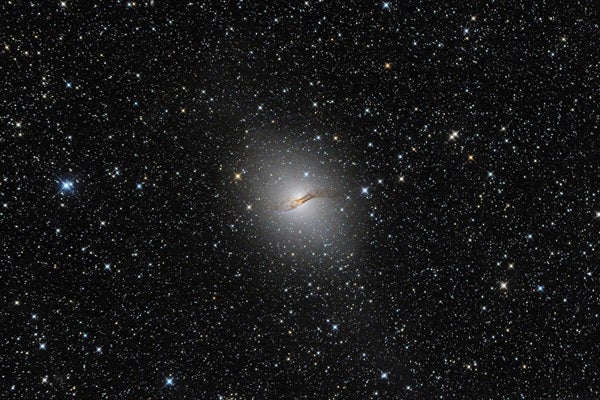Centaurus A (NGC 5128) is a standout object for Southern Hemisphere observers. NGC 5128 is often called the Hamburger Galaxy because of the two regions of stars (the bun) that surround a dark dusty lane (the burger). And it’s a heck of a meal: A mere 12 million light-years away, Centaurus A has a diameter of about 60,000 light-years.
Scottish astronomer James Dunlop discovered NGC 5128 in 1826 using a 9-inch reflecting telescope in his observatory in Parramatta, New South Wales, Australia. Astronomers gave it the catalog name Centaurus A because it was the first radio source discovered in the constellation.
Both NGC 5128’s appearance and its radio emission have their roots in a galactic collision. The main body of Centaurus A — a giant elliptical galaxy — is absorbing a smaller spiral galaxy. The two objects collided more than 200 million years ago, creating large regions of star formation. This collision also probably aided the growth of the super- massive black hole in the center of the galaxy. Current estimates of its mass put it in the range of 55 million times that of the Sun.
To find NGC 5128, aim your telescope 4.5° due west of magnitude 3.5 Mu (μ) Centauri. Through small scopes, the galaxy appears round with a wide dark lane cutting it in half. This lane gets wider on both ends. Through 14-inch or larger instruments, you should see a thin wedge of light shining through the lane’s western end.
Make sure to explore Astronomy‘s full list of 101 cosmic objects you must see. New entries will be added each week throughout 2022.










